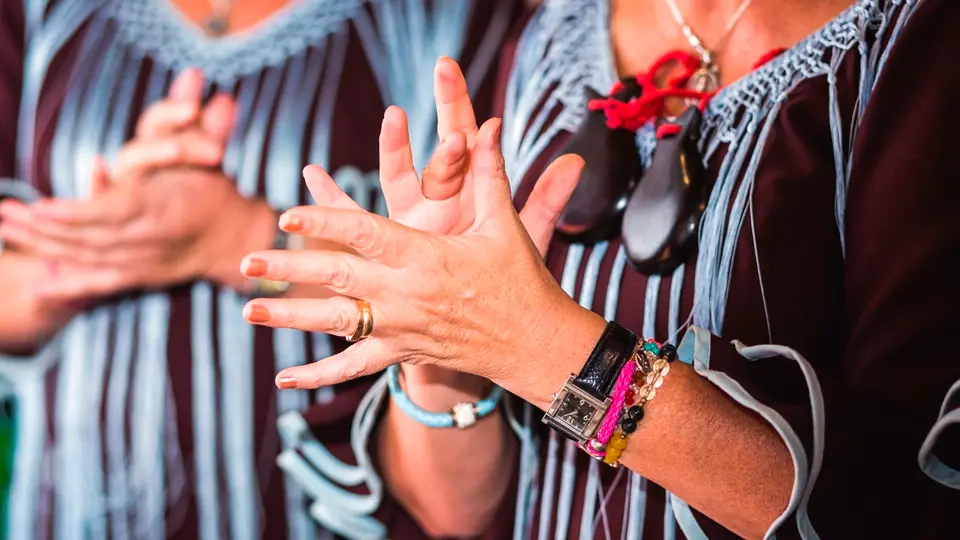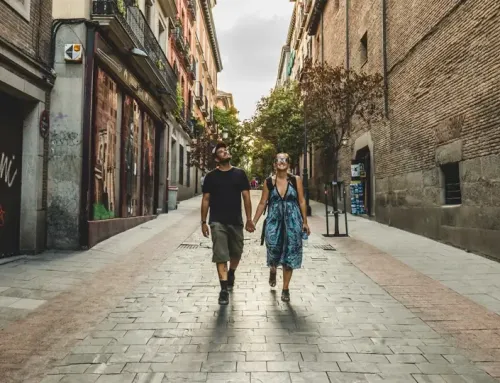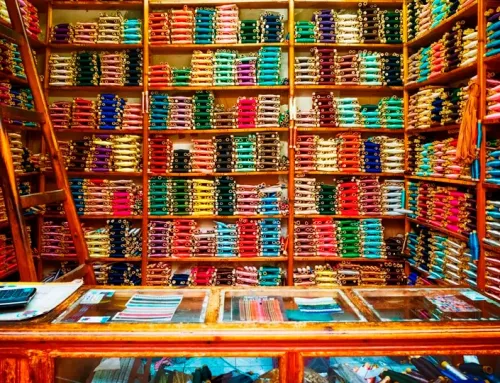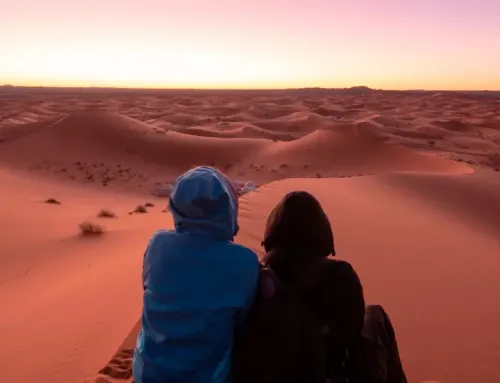International Dance Day: A journey to the Heart of Spanish Dance
April 29th is a special date in the calendar as the world pays tribute to dance, that universal expression of the soul and human emotion.
On this International Day of Dance, we invite you to embark on a unique and personalized journey through Spain to immerse yourself in the essence of Spanish dance. This tour is not just a tourist itinerary, but an immersion in the history, tradition and passion that shape one of the most vibrant and captivating artistic expressions.
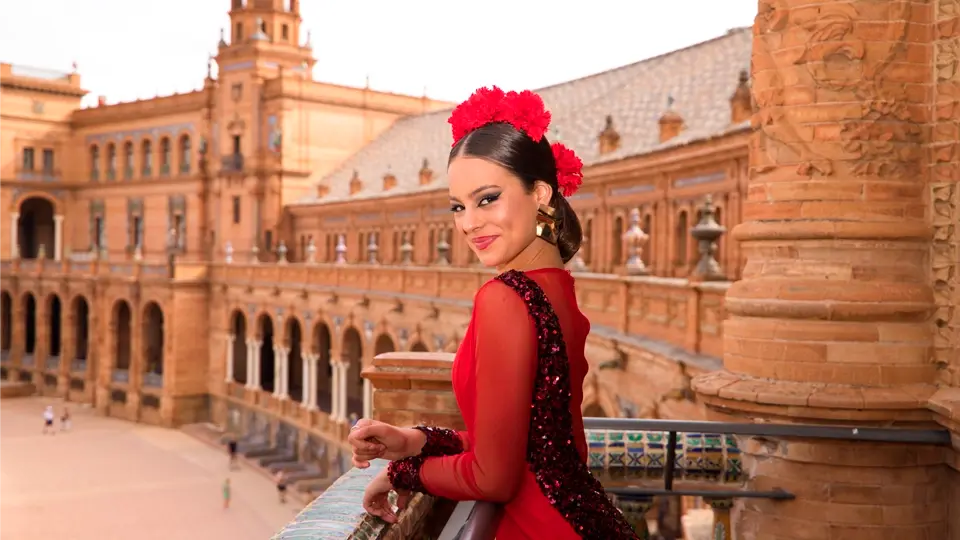
TYPES OF SPANISH DANCE AND THEIR LEGACY
In Spain, dance is much more than a series of steps; it is a language that translates deep feelings and connects generations.
This vibrant art form is divided into four main styles: flamenco, stylized dance, the bolero school, and regional folklore, each with unique characteristics that have evolved over the centuries to offer a spectacle full of color, emotion, and sophistication.
Born in Andalusia on a bed of gypsy, Arab, and Jewish traditions, flamenco blends cante jondo (deep singing), guitar playing, and rhythmic footwork to convey a “duende” (spirit) charged with passion and deep emotion. Body language, from the erect posture to the intense gaze, becomes a language of its own, telling stories of love, sorrow, and joy, where the duende emerges in every gesture and turn to enchant the audience.
The stylized dance, meanwhile, combines the expressive power of flamenco with the grace of classical ballet, incorporating sweeping arm movements and hand flourishes to embellish each movement, while the accompanying sound of castanets enhances its beauty.
There is also the branch of the escuela bolera, with roots in the 18th century. It is characterized by its baroque elegance, its complex jumps, turns and precise footwork, as well as for the virtuoso use of castanets in choreographies of great scenic splendor.
On the other hand, we can admire characteristic techniques such as zapateado, which requires precise control of the beat and strength on the ground. The virtuosity of the castanets is also essential, as they mark the rhythmic accents in all styles of Spanish dance, bringing dynamism and musicality to the show.

FROM SPANISH DANCE TO REGIONAL FOLKLORE
Spain’s cultural richness is evident in the diversity of regional dances that coexist, each with its own rhythm, costume, and meaning. These dances are living celebrations of customs, festivities, and traditions that allow the viewer to immerse themselves in the essence of a community.
Imagine touring the villages of Aragon, where the jota, with its energetic jumps and turns, beats to the rhythm of history. Zaragoza turn into authentic open-air stages during local fiestas, where tradition is celebrated with live music, traditional costumes and the unmistakable spirit of the people.
In Catalonia, the sardana is much more than a dance: it is a community celebration. Imagine strolling through the streets of Barcelona or getting lost in the charming plazas of the small villages of the Ampurdán, where the sound of music invites you to circle and dance in unison at every corner.
For its part, the Basque Country treats us to the Aurresku, a dance that stands as a profound tribute on ceremonial occasions and traditional festivals. In cities such as Bilbao and San Sebastián, this dance of elegance and respect is performed in cultural events that celebrate the importance of its heritage.
Galicia, with its mystical landscape and legendary soul, comes alive through the Muiñeira, a dance full of vitality and festive spirit. During the popular festivals of Santiago de Compostela and A Coruña, the echo of bagpipes, drums and flutes accompany the lively movements of the dancers.
In the Valencian Community, on the other hand, you can witness traditional artistic expressions, where folk dances are the leitmotif of local festivals full of color and flavor. The rhythms and movements, from jotas to pasodobles of popular origin, form a bridge between yesterday and today, allowing those who watch them to immerse themselves in a cultural narrative full of nuances.
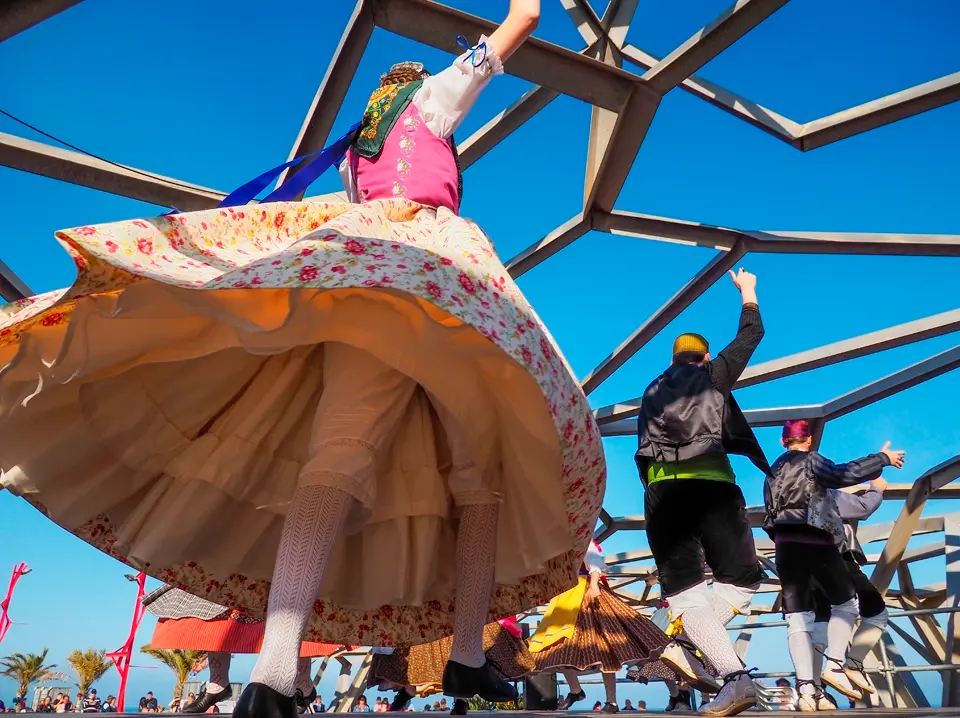
DANCE REFLECTED IN OTHER ARTISTIC DISCIPLINES
From the emotional power of flamenco to the festive choreography of the jota, these works immerse you in centuries-old traditions. Through paintings that seem to come to life, music that moves the soul vibrate, and statues that capture movement, you will discover the richness of a living heritage that celebrates the identity of every corner of Spain.
PAINTING AND VISUAL ARTS
In Spain’s most iconic museums, such as the Prado, and in the collections of regional museums, you will find a variety of works in which dance is the central theme of the visual narrative. From subtle representations to energetic compositions, artists have skillfully used movement as a narrative element, turning every brushstroke into a beat that invites us to experience the “duende” and authenticity of Spanish folk dance.
One of the most interesting works dealing with the theme of dance in Spanish art is Dancer (1925) by the Catalan painter Joan Miró. In this work, Miró transforms the gesture and cadence of dance into a celebration of abstract forms and vibrant colors, capturing the energy and freedom inherent in the dancer’s movement. Joan Miró’s Danseuse is part of the permanent collection of the Museo Nacional Centro de Arte Reina Sofía in Madrid, Spain.
The luminous scene in El baile de San Antonio de la Florida (The Dance of San Antonio de la Florida) by Francisco de Goya (1777) shows majos and majas dancing seguidillas on the banks of the Manzanares River, inviting the viewer to join the festive circle with an open composition that transcends the canvas.
For its part, Peter Paul Rubens’ Danza de aldeanos (1635) depicts a lively peasant circle at sunset, where footwork and flute music celebrate rural life in a vibrant burst of color and movement.
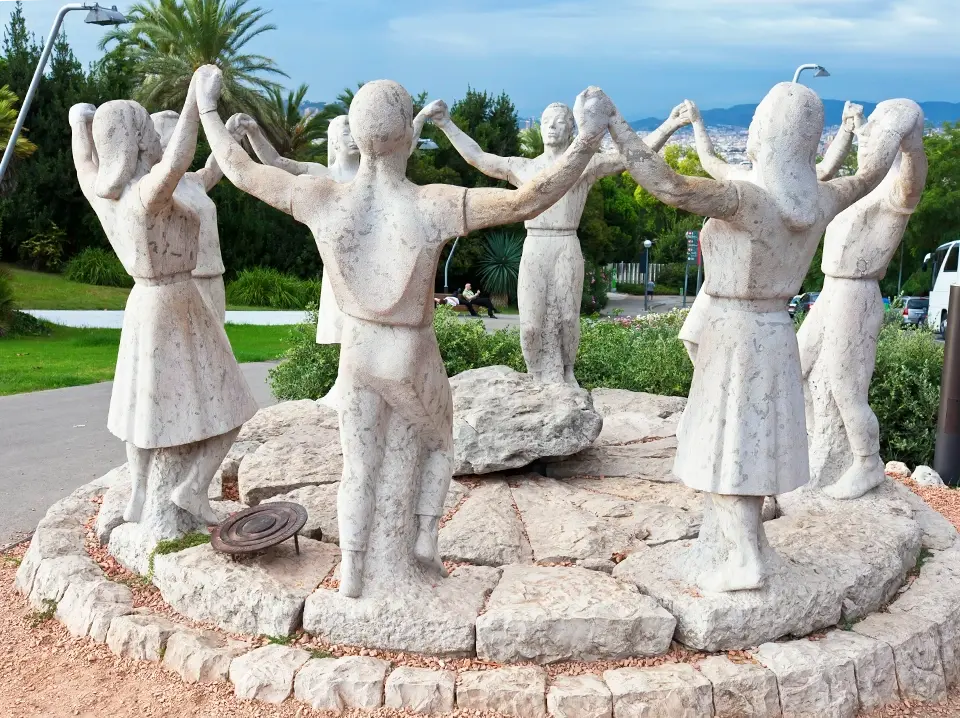
MUSICAL COMPOSITIONS
When we think of Spanish dance, the music of El amor brujo comes to mind. Manuel de Falla captivates with this ballet, where flamenco singing, percussion, and guitar blend together. His piece La danza ritual del fuego combines music and dance to convey the passion and mystery of Andalusia.
The ballet El sombrero de tres picos (1917–1919), choreographed by Léonide Massine and with sets by Picasso, reinvents traditional Spanish rhythms with a vibrant style.
Isaac Albéniz (1860–1909) wasn’t just a talented pianist, he explored Spain’s musical essence. With his skillful technique, he brought the country’s sounds and rhythms to life on the piano. His 6 Spanish Dances, Op. 37 (1887) range from the lively Catalan sardana to the deep emotion of a slow dance, evoking festivals and town squares. In the Spanish Suite No. 1, Op. 47 (1882–1889), Albéniz captures the energy of the jotas and the vast landscapes of the northeast, turning the piano into a vibrant musical canvas.
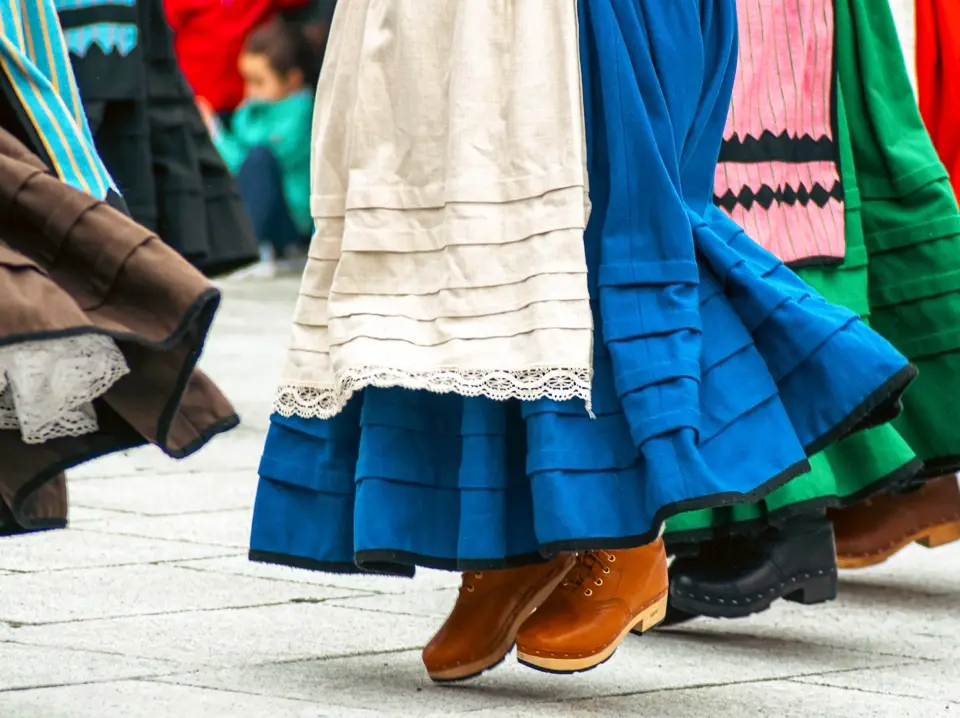
SCULPTURES AND THREE-DIMENSIONAL ART
The Monument to Pastora Imperio (2006) in Seville is a work by Luis Álvarez Duarte that immortalizes the legendary dancer in a bronze that exalts the strength and grace of flamenco.
In the vibrant heart of the Josep Maria Serra Martí park in Canyelles, Barcelona, Alegrías stands like a torrent of energy: raised arms, the rhythm of bulerías and an air of triumph that celebrates the soul of flamenco and the pride of a united community. Forged in 1998 by Ignasi Farreras Casanovas, its dynamic silhouette emerges from a curved concrete base reminiscent of a tablao, transforming the space into an improvised stage.
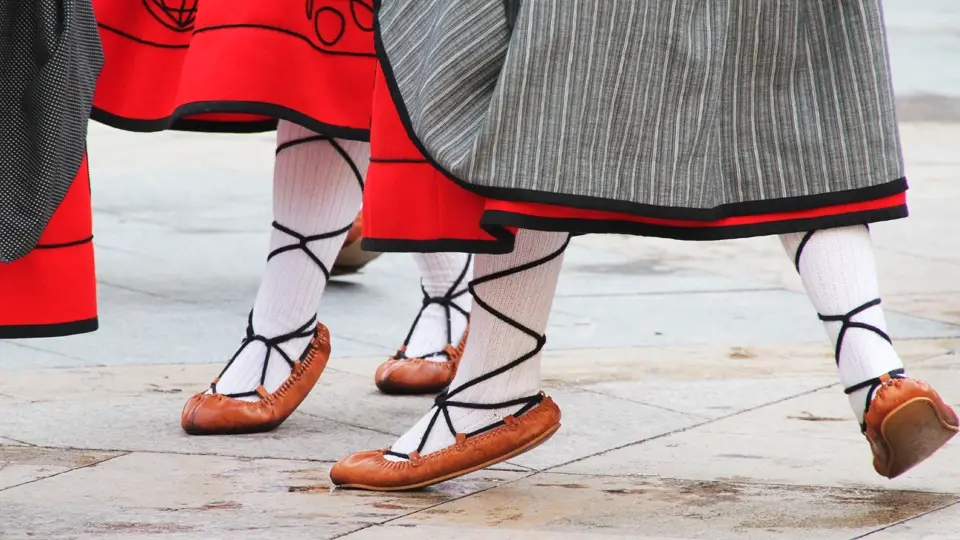
EVENTS CELEBRATING SPANISH DANCE
Imagine immersing yourself in the Seville Flamenco Biennial, where each performance is a passionate cry, an intimate encounter with the Andalusian spirit that ignites the soul. It is a vibrant festival that transforms the experience of dance into an unforgettable celebration.
If you are passionate about the world of flamenco, we invite you to discover more in a unique experience in the city of Seville.
In the capital, Madrid en Danza transforms the city into a magical stage for an entire month. Here, ballet, flamenco, and contemporary performances coexist, creating an atmosphere where every corner invites you to dream and let yourself be carried away by the passion of movement.
And let’s not forget the charm of Granada: its International Dance Festival will take you to a world where history and emotion merge on stages full of magic.
Strolling through its streets while enjoying these vibrant performances is like traveling back in time, immersing yourself in tradition with every step you take
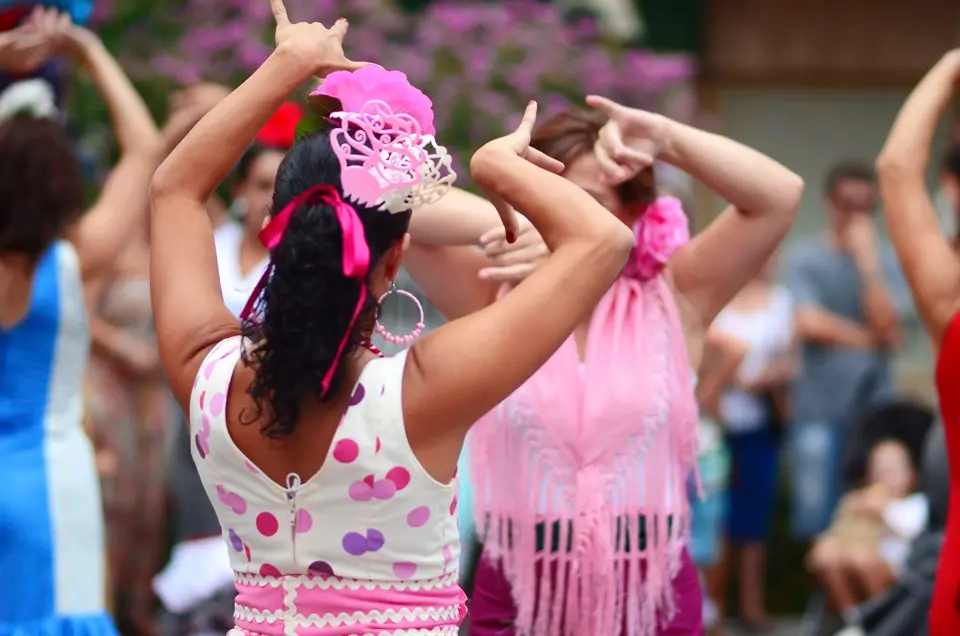
Each of these events is an invitation to celebrate the essence of dance, to let yourself be captivated by the energy and passion that only Spanish dance can convey.
EXPERIENCE SPANISH DANCE WITH US
International Dance Day celebrates art as a bridge that unites souls, eras, and cultures, offering us the opportunity to stop, feel, and admire the beauty of human movement. Imagine a world where the rhythm of the guitar, the echo of the zapateado and the elegance of a turn intertwine to tell vibrant and colorful stories; an experience that pays tribute to cultural richness and awakens deep emotions.
At Carameltrail, we turn this invitation into reality: we design personalized itineraries that arouse your curiosity and love for traditions, transforming each trip into a celebration of art and life. Our commitment is that, when you return home, you will take with you not only memories of landscapes and cities, but also the palpable essence of a tradition that continues to touch the heart of the world. Shall we take the first steps in organizing your dream trip?
